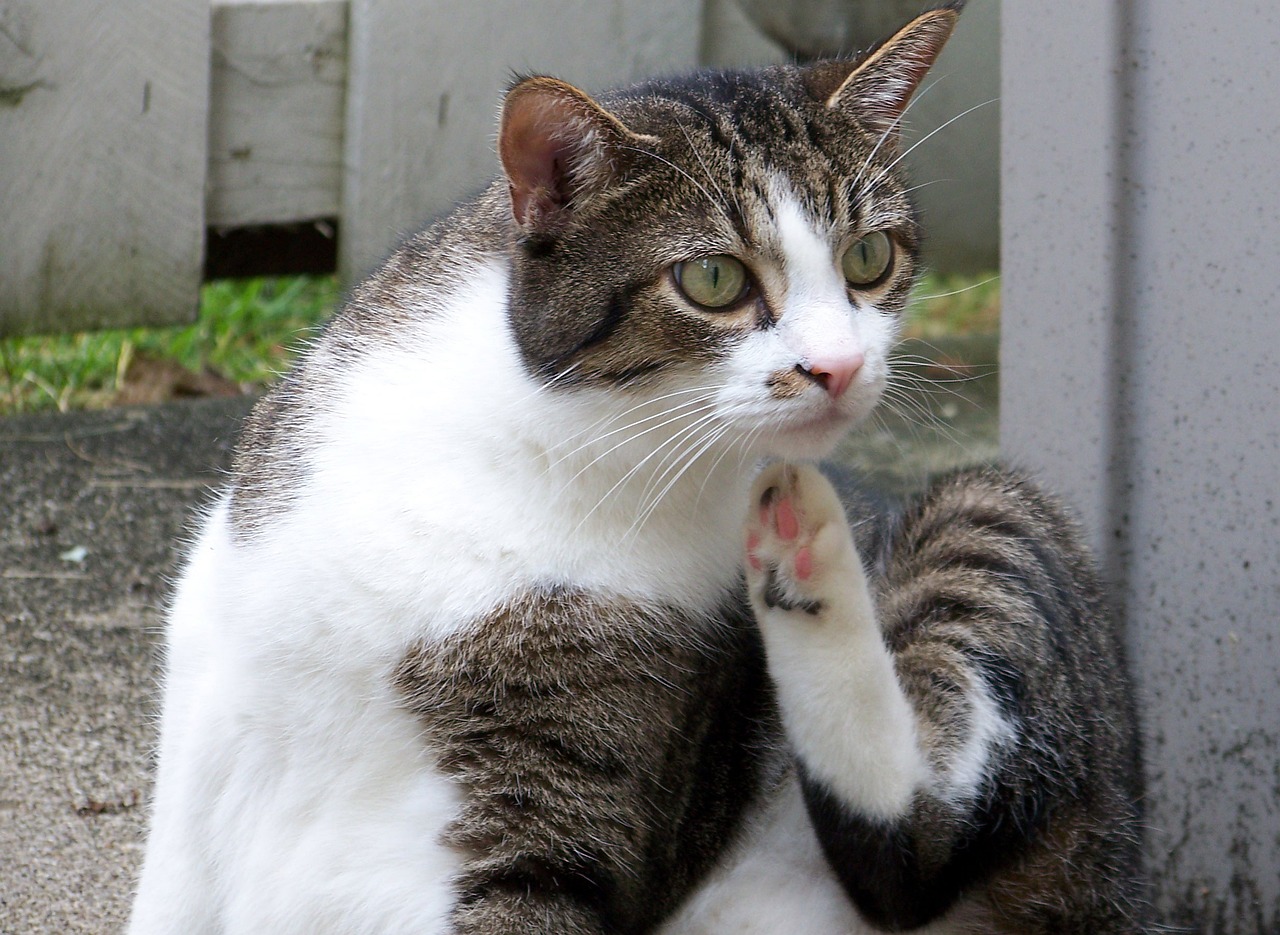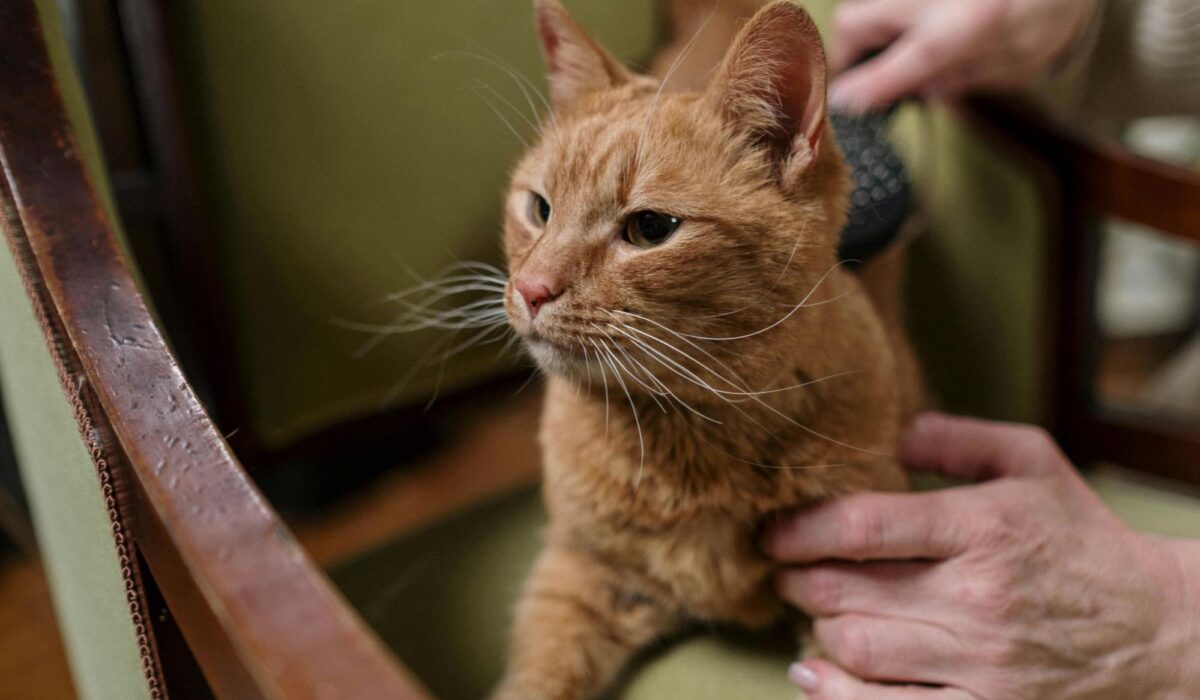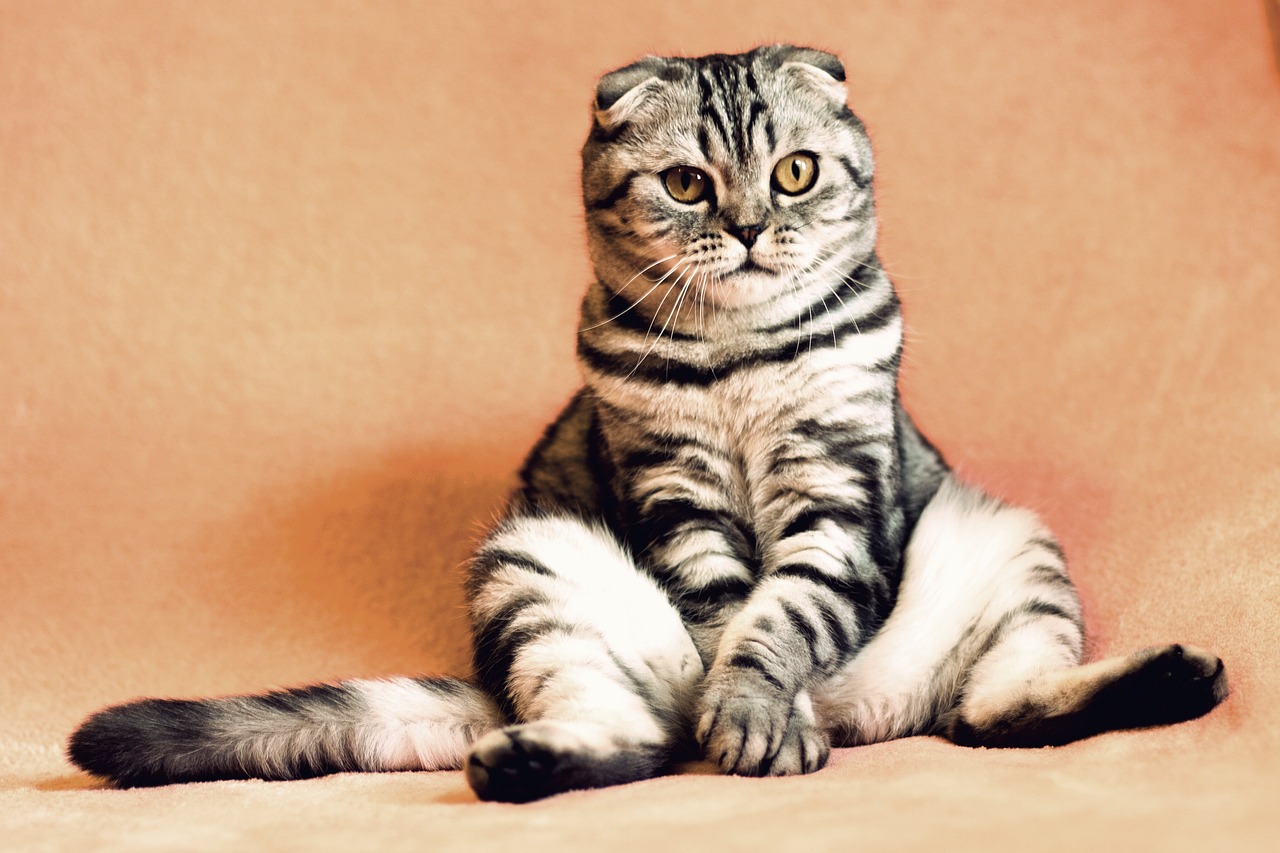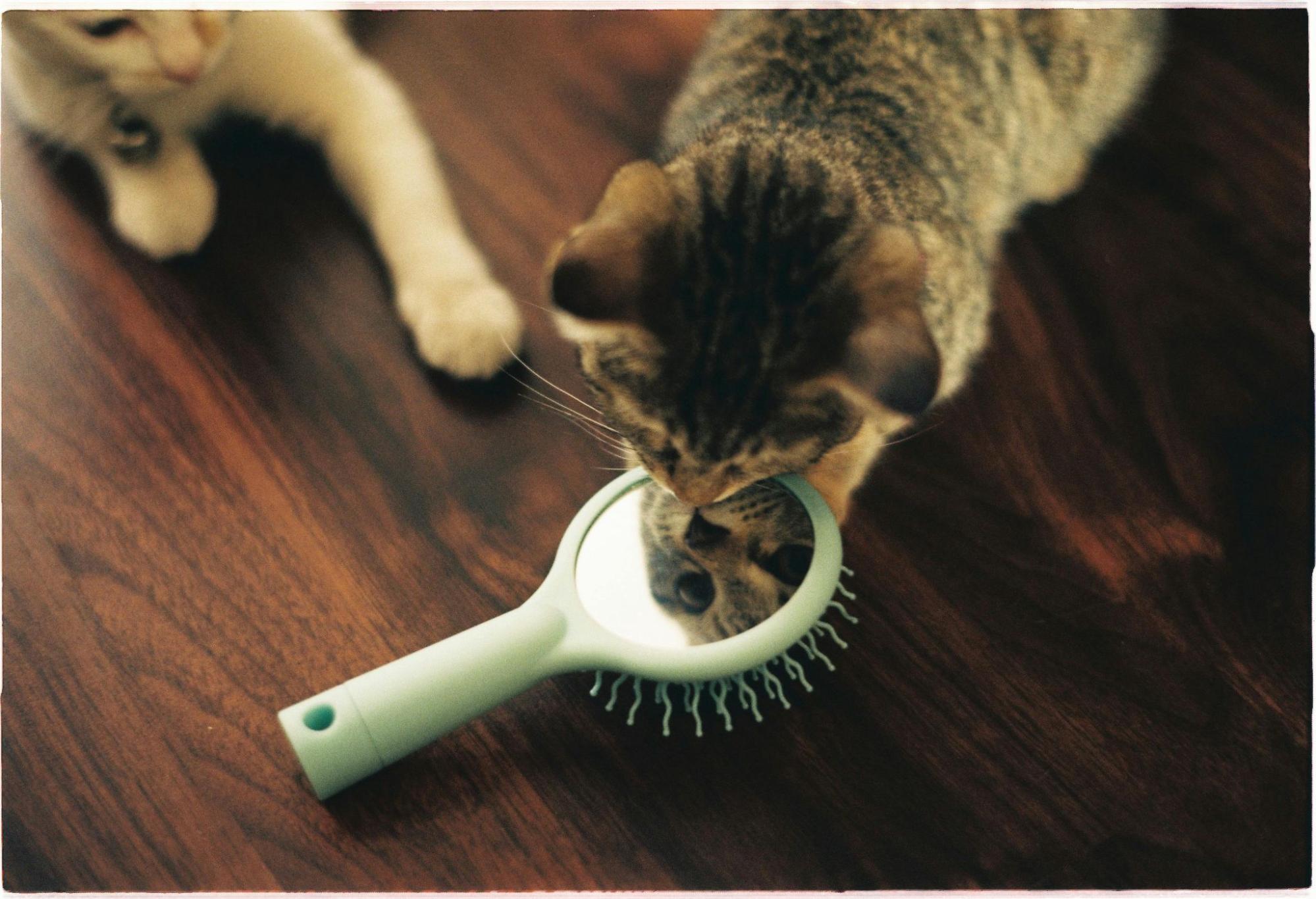Cat Dandruff: Your Questions, Answered
Just like humans, cats get dandruff too. These dry, flaky bits can be annoying to you and your cat. You might even wonder whether they’re normal or a sign of something else.
We’ve got you covered with answers to your kitty dandruff questions. Let’s dig into what cat dandruff is, how it occurs, and how to get rid of it.
What Is Cat Dandruff?
Cat dandruff is just like human dandruff—tiny white flakes of dry skin that can show up in your cat’s fur. You might notice it more on dark-colored cats or in areas where their fur is thinner.
While dandruff seems like a cosmetic issue, it might also mean there’s an underlying health issue. It’s not just about a dusty coat; it’s your cat’s skin sending a signal that something might need attention.
Dandruff is not the same as shedding or normal skin turnover. Those white flakes are dead skin cells that haven’t been shed properly, usually because of dryness or irritation. While not always a major concern, keeping an eye on your cat’s dandruff can help you catch potential issues early.
Is Cat Dandruff Normal?
A little bit of dandruff might not be a big deal. Cats naturally shed skin cells just like people do. But if you’re seeing a lot of flakes or notice other symptoms like redness, excessive grooming, or hair loss, it’s worth looking into.
Dandruff isn’t typically “normal,” but it is common. Think of it this way: if your cat’s coat is usually shiny and sleek, a sudden outbreak of dandruff could be their way of saying, “Hey, I need some extra care!”

What Causes Cat Dandruff?
Several things can cause dandruff in cats, from minor issues to more serious health concerns.
One of the most common culprits is dry air, especially in colder months when indoor heating sucks the moisture out of everything—including your cat’s skin. When cats get dry skin, it can lead to extra grooming, scratching, and dandruff.
Poor nutrition can also play a role; cats need a diet rich in omega-3 fatty acids to keep a healthy coat. They might not be getting enough healthy oils, which can cause their skin to dry out.
Other potential causes include:
- Skin infections
- Allergies
- Parasites like mites
- Obesity (which can make it harder for your cat to groom properly)
- Stress
If the dandruff doesn’t go away even after you try to fix it, you might need a vet visit to rule out something more serious.
Dandruff vs. Flea Eggs
One potential cause of “dandruff” might not be dandruff at all: it could be flea eggs.
At first glance, dandruff and flea eggs look similar—both are small, white, and easy to see in your cat’s fur. But there are a few key differences. Dandruff flakes are flat and irregular, while flea eggs are tiny, oval-shaped, and look slightly shinier.
One way to tell them apart is to comb your cat’s fur over a dark surface. Dandruff will scatter like dry flakes, while flea eggs are sticky and cling to fur or skin.
If you suspect fleas, check for other signs like excessive scratching, redness, or the infamous “flea dirt” (tiny black specks that resemble pepper). Once you know the difference, you can start treating the right problem.
Can Indoor Cats Have Dandruff?
Yes, indoor cats can have dandruff. Indoor air quality can affect a cat’s skin, especially in the winter when heaters are running. When the air is dry (indoors or outdoors), your cat’s skin can get dry too. Diet also plays a role. Regardless of where your cat lives, if their food is lacking healthy oils, you might notice it on their skin.
Also, indoor cats might not be as active as outdoor cats. This can affect their circulation, which in turn affects their skin health. Keeping your cat stimulated is good for more than keeping a healthy weight.
How to Get Rid of Cat Dandruff
If dandruff is bothering your kitty, there are a few things you can do to get rid of it. First, make sure it’s dandruff so you can treat the right problem. If it’s not dandruff, then the following tips won’t make the white flakes go away.
Next, try to figure out what’s causing the dandruff. It might be dry air, which you can improve with a humidifier.
If it might be diet, you can add omega-3 fatty acids to your cat’s food. These can be found in some cat foods or added through supplements (with your vet’s approval, of course).
Regular grooming also works wonders. Brushing your cat’s fur stimulates their skin and helps distribute natural oils, keeping their coat healthy and shiny. You can even find special shampoos designed for sensitive cat skin, but always choose a product made specifically for cats to avoid harmful ingredients.
If the dandruff doesn’t improve or you notice other symptoms like excessive scratching, redness, or hair loss, it’s time to consult your vet. They can check for underlying issues like allergies, infections, or parasites and recommend the best treatment plan for your furry friend. With a little extra care, your cat’s coat can be flake-free in no time!
Schedule Grooming Services for Your Cat
A spa day might be exactly what your itchy kitty needs. Our Certified Feline Master Groomers are trained to spot skin issues like dandruff and can tell whether those white flakes might be something more. Quality bathing and brushing can remove excess dandruff, restore the fur’s natural shine, and leave them feeling refreshed. Request your appointment today!




